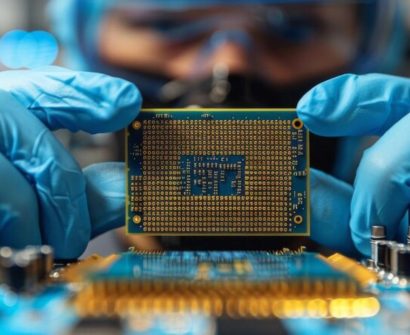
Are you intrigued by the intricate world of VLSI Technology? Curious about how billions of transistors are meticulously packed onto a single chip to create complex Systems on Chips (SoCs)? If so, you’re in the right place. In this article, we delve deep into the practical aspects of the Physical Synthesis Process in VLSI Design, shedding light on its significance and intricacies.
Understanding Physical Synthesis
At its core, Physical Synthesis is the art of converting Register Transfer Level (RTL) code into an optimized Gate Level Netlist, a crucial step in the VLSI Design Flow. With modern Integrated Circuits (ICs) housing incredibly complex circuitry, manual design becomes impractical, if not impossible. Hence, the synthesis process automates the design, transforming abstract behavioral code into tangible gate-level representations.
The Synthesis Journey
The journey begins with the translation of RTL code into a gate-level circuit, marking the initiation of the synthesis process. However, this initial translation may result in suboptimal designs, often utilizing excessive resources. Hence, the synthesis tools embark on an optimization phase, streamlining the netlist by minimizing gate counts and enhancing speed.
Subsequently, the mapping stage ensues, where logic blocks from the optimized netlist are mapped to equivalent cells in the standard cell library. This critical step ensures that the design meets specified requirements such as power, area, and speed. Moreover, the synthesis tool’s intelligence shines as it strategically selects logic cells from different libraries to optimize performance based on defined constraints.
Navigating Complex Constraints
Throughout the synthesis journey, various constraints guide the decision-making process. These constraints encompass factors like maximum area utilization, clock time periods, and power consumption thresholds. By adhering to these constraints, the synthesis tool orchestrates the creation of an efficient and functional gate-level netlist.
Optimizing for Diverse Applications
VLSI designs cater to a plethora of applications, each with unique requirements. From high-speed computing to portable wearables, the demands vary significantly. To address this diversity, standard cell libraries offer a spectrum of logic cells tailored to specific needs. By leveraging these libraries and judiciously selecting logic cells, designers optimize designs for diverse applications.
Conclusion
The practical physical synthesis process serves as a cornerstone in VLSI Design, bridging the gap between abstract concepts and tangible silicon chips. Through meticulous optimization, mapping, and constraint adherence, synthesis tools transform RTL code into efficient gate-level netlists, laying the foundation for complex SoCs.
Aspiring VLSI engineers embarking on their journey into the realm of Physical Design can benefit immensely from understanding the nuances of the synthesis process. With hands-on experience and a comprehensive understanding of synthesis methodologies, they can embark on a fulfilling career in VLSI Design.
Also Read: A Walkthrough VLSI Physical Design Engineer Salary In India.
To know more about VLSI Course , SuccessBridge VLSI training institute. You can begin your VLSI career by enrolling in the placement-assisted live courses available at SuccessBridge We offer various VLSI online courses. We offer VLSI Physical Design course, Design Verification course, DFT Training,Chip design course many more. Explore VLSI Courses From The Leaders In VLSI Training






